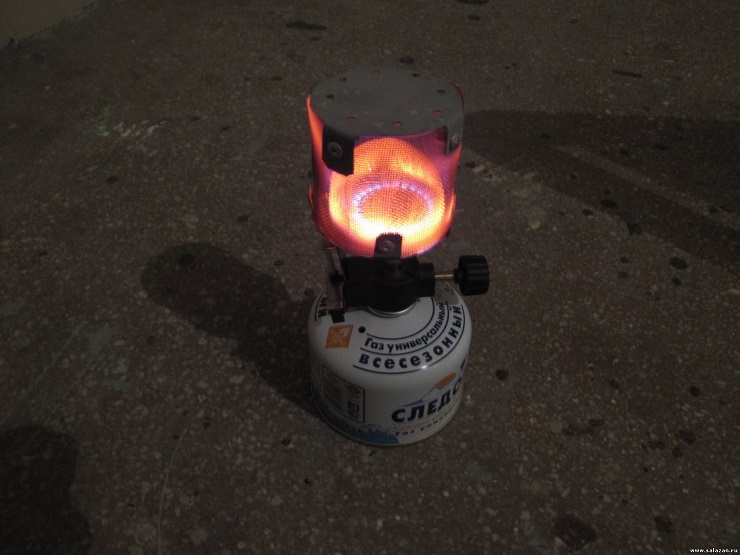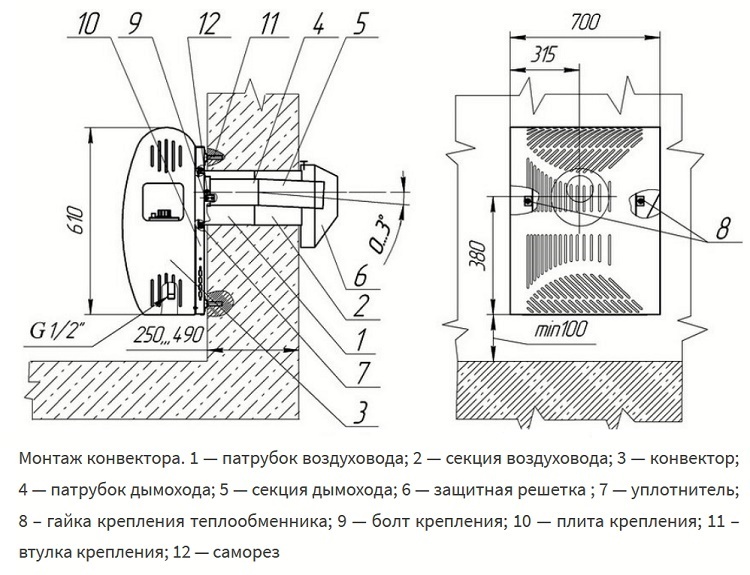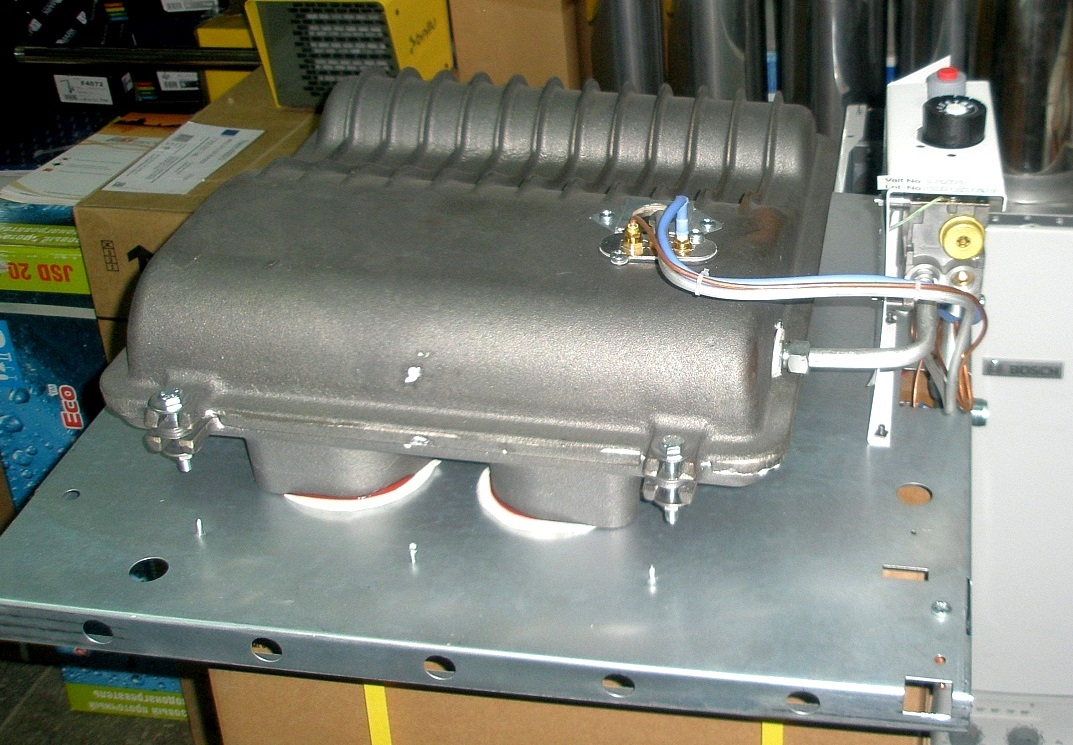Modern technical progress has hardly affected the cast-iron radiators for the 167 years of their existence. Consumers still opt for these devices due to the mass of positive product characteristics.
And even some shortcomings do not prevent the installation of cast iron batteries when installing heating systems. Next, we will describe in detail all the advantages and disadvantages of cast iron radiators, as well as the characteristics that need to be paid attention to before buying.
The content of the article:
- The advantages of cast iron radiators
- The disadvantages of cast iron batteries
-
Technical characteristics of radiators
- Iron battery manufacturers
- Dimensions of radiators
- Appearance and device equipment
- Thermal power devices
- Other equipment features
- Conclusions and useful video on the topic
The advantages of cast iron radiators
The use of cast iron batteries has a lot of advantages, which force us to choose these devices for the installation of heating systems. Some positive qualities are not always voiced by sellers in stores, although you should also be aware of them and take them into account when purchasing.
Among the advantages of cast iron batteries should be noted resistance to aggressive parameters of the coolant. It is caused by the material of their manufacture - cast iron does not corrode for a long time even at high temperatures.
Various chemical additives in the coolant, as well as iron oxides formed in the main pipes, also do not lead to the destruction of the iron.

Cast-iron radiators with designer finishes are produced predominantly by European factories, therefore they are of little demand on the domestic market.
In addition to resistance to corrosive processes, such batteries have the following advantages:
- the possibility of repair in case of blockage and leakage;
- inertia of heat transfer;
- acceptable cost;
- possibility of operation at high temperature and high pressure;
- high percentage of heat transfer due to radiation;
- ease of installation;
- long term work.
Battery clogging and leakage may occur due to coolant fault. Thus, the circulation in the pig-iron radiators of untreated water with a high content of calcium and magnesium salts leads in time to a narrowing of the internal cavities. This impairs the heating rate of the sections and the efficiency of heat transfer.
In addition, because of the high temperature of the water in the batteries, the intersection gaskets gradually wear out and leakage may occur.

The unwinding of the cast iron radiator sections should be carried out gradually and synchronously from above and below, otherwise the threaded connection can be permanently damaged.
Problems associated with long-term operation of cast iron radiators can be quickly resolved in the summer. The internal cavities of the sections are easily cleaned of deposits with a special tool.
Due to the resistance of cast iron to machining, the quality of radiators does not suffer. When reassembling sections, you can immediately replace worn gaskets.
The increased inertia of the heat transfer of cast iron radiators is provided by the weight of the structure and the large internal volume of the coolant.

If steel and aluminum models cool down just a few minutes after the cessation of water circulation, the batteries from cast iron continue to heat the room effectively for an hour
As for the cost of one cast-iron section, it is in the same framework as the price of its aluminum or steel counterparts. Therefore, the cost of purchasing batteries from cast iron will be no more than radiators from other materials.
However, cast iron products are much better tolerated. water hammerwithstand short-term pressures of up to 16 bar.
The possibility of operation at high temperature and high pressure is provided by a small coefficient of thermal expansion of cast iron. Among all the materials from which the heating batteries are made, it has the smallest.
Because of this, cast iron is most resistant to the appearance of microcracks during prolonged use. The same property provides stable tightness of threaded connections and gaskets at a pressure of 8-9 atmospheres.
And such an advantage as high heat emission due to radiation allows to place iron radiators near the wall. To maximize the direction of thermal radiation into the room, it is recommended that special reflectors be mounted on the wall behind the battery.

The ribs between the columns are ordinary cast-iron plates and do not have internal cavities. Their function is to increase heat transfer.
In addition, cast iron radiators are convenient and easy to install. Sections of cast iron batteries are connected to the pipes and to each other by means of a threaded connection and paronitic gaskets. A special key allows you to disconnect any sections without removing the extreme radiators.
And the long term of work once again confirms the quality and reliability of this heating equipment - cast iron radiators are guaranteed to last 50 years.
But such a period they will work only with regular service, which is the periodic removal of internal deposits and the replacement of gaskets.
The listed advantages of cast iron batteries make them indispensable in large rooms with an extensive heating network and with high operating pressure.
The disadvantages of cast iron batteries
Despite the many advantages, cast iron radiators are endowed with several disadvantages. This was facilitated by both the design features and the properties of the iron itself. Cast iron batteries, for example, have difficulty integrating into automatic temperature control systems.
Due to the inertness of heat transfer, it is quite difficult to control the temperature set in the room. After all, after turning off the boiler, cast iron radiators will give off their heat for another hour, warming the surrounding air.

It takes about half an hour to reheat the whole mass of the battery and the water it contains. All this period the room will practically not warm up.
There are also other disadvantages, including:
- large volume of coolant;
- significant weight of one radiator;
- designer uniformity.
A large amount of water in the battery has its drawbacks. It takes more time and energy to warm up the entire coolant.
In addition, it increases the load on the pump, which is forced to pump a significant amount of water in one warm-up cycle.

The volume of cavities in the cast iron battery is at least 2 times larger than that of the aluminum one and 4 times larger than that of the bimetal one.
The large weight of the devices is also a disadvantage, which is more concerned with installers and service services than the tenants. However, in self-assembly of the heating system one cannot do without an assistant when fixing the cast-iron battery. The weight of one section is about 7 kg.
Such a minus as designer uniformity is due to the technological features of cast iron casting - they do not allow to create elegant details from this material. Here are the batteries and look the same.

Because of the simplicity of the design, the energy efficiency of the MS-140 battery models is one of the worst, but the price of such devices is also the lowest
To diversify the model range, manufacturing companies produce cast-iron radiators with a beautiful pattern on the surface, but their cost is 10-20 times higher than the price of simple models.
However, if there are no funds for expensive exclusive models, you can purchase ordinary radiators, and then disguise them with battery screen.

Intricate patterns, different heights and widths of radiators provide some variety among expensive radiators. This allows designers to embed cast iron batteries into sophisticated interiors.
Another drawback is the vulnerability of equipment to hydraulic impacts. The fact is that cast iron is a durable, but rather fragile material. According to GOST 8690-94, radiators must withstand a short-term pressure of 1.5 MPa.
But sometimes pressure can exceed this value. This happens when the pump starts abruptly and there are no compensators. As a result, cast iron batteries may crack or burst.

Battery rupture is often accompanied by pre-clicks and hissing. These sounds should alert and force to block the access of the coolant to the radiator.
In many cases, the advantages of cast iron radiators far outweigh their disadvantages. This fact helps such batteries to maintain a good position in the market of heating systems.
Technical characteristics of radiators
Competition in the radiator market is extremely high, so not many manufacturers produce and sell iron batteries in the domestic market.
Before buying, you should be familiar with the technical characteristics of the most common cast-iron radiators. This will allow you to choose exactly the products that are most suitable for the planned or existing heating system.
Iron battery manufacturers
The market feature of cast iron batteries is a large proportion of transportation costs in their final cost. Therefore, in the domestic market there are no models of manufacturers from foreign countries.

If the German batteries are notable for their special refinement, then the products manufactured by PrAZ are not inferior to them with their technical characteristics. Moreover, the batteries of the Cheboksary Aggregate Plant are the best among Russian manufacturers.
The main plants that offer cast iron batteries are:
- Adarad (Turkey);
- Cheboksary aggregate plant (Russia);
- Viadrus (Czech Republic);
- Demrad (Turkey);
- Minsk Plant of Heating Equipment (Belarus);
- KIRAN (Ukraine);
- Konner (China).
There are many European manufacturers of cast iron radiators, but their products are not competitive. It has a high price, and the quality is comparable with domestic samples.
Dimensions of radiators
The dimensions of radiators in the post-Soviet space have been standardized. The distance between the center of the axes of the flow and discharge pipes of the coolant was 300 or 500 mm.
The depth of the sections and their width were not regulated and differed from different manufacturers. Most modern radiators are also adapted to these standards.

Cast iron radiators can be selected in any size that is necessary for placing them under a window sill or in a wall niche
The most common model of cast iron batteries - MS-140. It is she who stands in the majority of Khrushchev and nine-story building built in the 60-80s of the last century.
The dimensions of its section are: center distance - 500 mm, total height - 588 mm, width - 93 mm, depth - 140 mm.

The wider the sections, the less they are needed to gain the necessary power, and therefore the number of potentially problematic joints decreases
The main goal of creating cast-iron radiators with various dimensions is to enable the buyer to choose the model that fits the most interior. Batteries with a total height of up to 400 mm, for example, fit perfectly into rooms with a low window sill layout.
Appearance and device equipment
Almost all cast iron radiators are composable. They are made of gray iron and consist of detachable sections that are connected using nipple bushings. This design allows you to create a one-piece battery of the required length and power. Paronit gaskets are placed between the sections.

Multi-column cast iron radiators are difficult to externally clean from dust, which markedly reduces the heat dissipation of batteries.
In the horizontal plane between the sections, the water moves only in one direction. Vertically, the flow of fluid occurs through one or more channels. With their number increases the area of radiators and their power.
The disadvantage of multichannel sections is their high cost and high hydrodynamic resistance.
The classic “accordion” look of radiators is becoming a thing of the past. Due to the predominantly radiative method of heat release, manufacturers seek to increase the area of the front of the battery, which translates into a flatter appearance. An example is the model Konner Modern500.

Radiators from cast iron of the Konner Modern series at a low cost have a beautiful polished surface identical to aluminum panels.
A number of imported models have decorative patterns on the surface, but the cost of such batteries is incomparably high.
The weight of the cast iron sections is quite large. The need to preserve the strength of the walls and the maximum area of the heating surface does not allow engineers to greatly reduce the mass / power ratio. The weight of the section of the standard model MC-140 is 7.1 kg.
A large mass of cast iron radiators and requires a good mount. Batteries usually do not have special elements of construction for fixing on the wall. They simply hang on special brackets, which are pushed in between the sections. There are special legs for installing batteries on the floor.
Thermal power devices
The power of the radiator equipment is characterized by the ability to release heat energy at the maximum operating temperature of the coolant. This indicator in cast iron radiators depends mainly on their surface area.
Depending on the model, the power can be from 80 to 200 watts per section. These are the passport values, which in reality can be much lower.

The recommended power of heating radiators is indicative. For regions with severe frosts, it can be very different from the standard
There is a classical formula for calculating the required power of a cast-iron radiator, based on the volume of the room: for every 25-30 m3 radiators with a total capacity of 1 kW must be installed. If there are 2-3 external walls, this indicator should be adjusted in the direction of increasing power. For more information on how to calculate the required number of batteries for heating, read in this material.
To enhance heat transfer due to convection, some models of cast-iron radiators equip with ribs between the columns. This design can increase the capacity of the section by 20-40%. It should be remembered about the need to regularly clean these bridges from dust.
Other equipment features
When choosing a radiator, you should pay attention to their other characteristics:
- maximum working pressure;
- volume of coolant in the section;
- the maximum temperature of the coolant.
All of these indicators for cast iron batteries are higher than aluminum and bimetallic analogs. But the characteristics may differ in different models, which should be considered when selecting the components of the new heating system.

Models of the Minsk plant of heating equipment
Maximum settings are especially important when replacing batteries connected to a central heating system. When it is crimped in the autumn, an overpressure is supplied to the pipes, which can break unsuitable radiators.
This may result in flooding of both its own and the lower apartment, therefore, special attention should be paid to the operating values of the pressure and temperature of the heat carrier.
Conclusions and useful video on the topic
The presented video materials on cast iron radiators will help in choosing a particular model and will additionally explain their technical characteristics.
Cast iron radiator overview:
Comparison of thermal characteristics of radiators from various materials:
Selection heating radiators, including cast iron, should be made with the obligatory account of their technical characteristics. This will avoid breaking the heating circuit at maximum loads and provide sufficient heat to the heated rooms.
Please write comments, share the experience of using cast iron radiators, ask questions in the box below. We are always ready to clarify incomprehensible moments.


